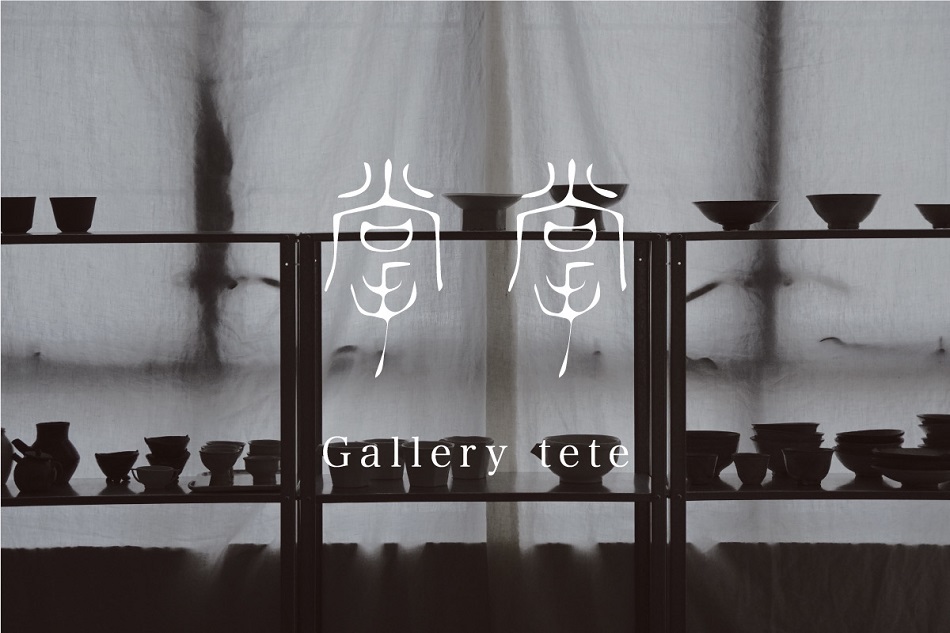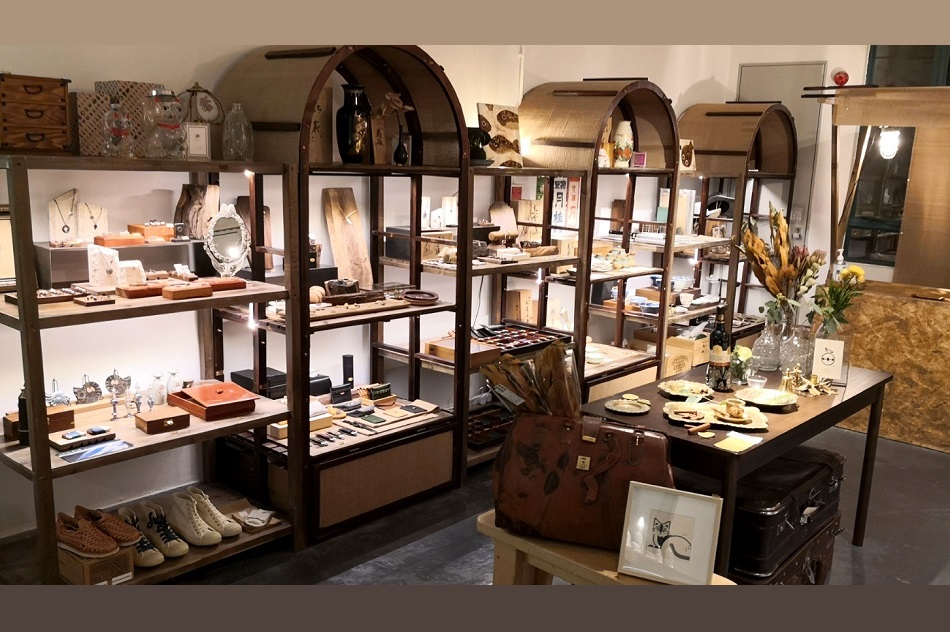Leisure & Culture #68
In Praise of Shadows
The Cisterns, the underground reservoirs
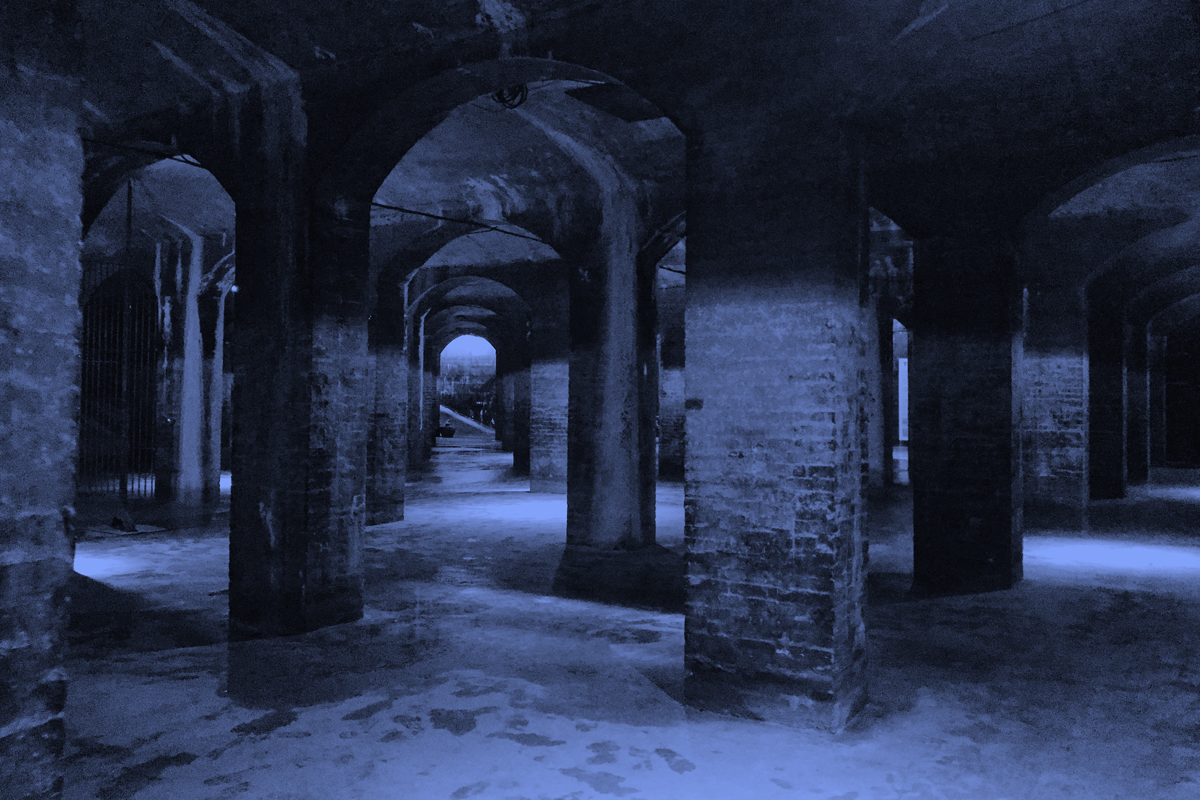
Written by Kit Chan
Translated by Joel Wong
Photos by Kit Chan & The Cisterns
What if a reservoir buried underground and isolated from the world for many years was given a second life? What would it become?
For example, the Dipòsit de les Aigües has become the main library of the Universitat Pompeu Fabra in Barcelona; Spring Hill Reservoirs was turned into an underground opera house in Brisbane; The Paddington Reservoir which has been transformed into an award-winning recreational park in Sydney; And the Basilica Cistern has become an unusual attraction to tourists in Istanbul, etc. they transformed from reservoirs their new roles, new functions and continue to service the city.
I have visited The Cisterns in Copenhagen before, it’s located within the Frederiksberg Palace and hidden among the park’s greens.
While the sun is shining outside, but when you get into the Cisterns underground, there is a dark universe underneath.
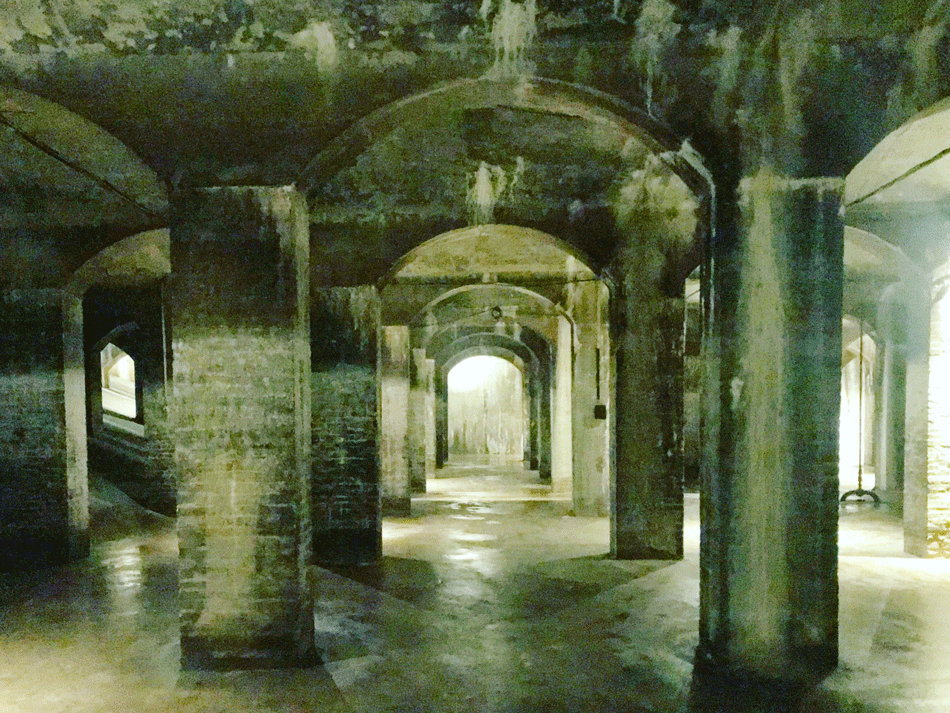
The Cisterns
Let’s start with the history first. The Cisterns was built between 1856 and 1859. It was originally an open-type reservoir with a capacity of 16 million liters, providing clean water for the city of Copenhagen. To avoid contamination of the water source, the reservoir was later completely covered with concrete in 1891, a grass slope was paved on top, and a fountain was built, and it has been buried under the park ever since. In 1933, the city's water supply system became more accomplished, so The Cisterns ceased operation and was rated as a cultural heritage site. But it was abandoned since without much daylight to its future.
There’s new development in 1996. Denmark was selected as the European Capital of Culture that year, and some monuments were re-evaluated and reused. As a result, The Cisterns formally has become the Museum of Modern Glass Art in 2001 and also a member of the Frederiksberg Museum in 2013. Different exhibitions began to take place there.
The Cisterns is not another art museum that came from any historic buildings’ revitalization project. Unexpectedly, the singularity of its architecture and atmosphere have given the artists some serious challenges: as no sunlight can be penetrated through The Cisterns, the humidity is almost 100%, and the temperature is between 4 °C to 16°C, the echo lasts for 17 seconds, with such unique conditions given, what kind of museum can it be?
The answer is, all the exhibitions here are designed in consideration of the characteristics and nature of the reservoir, presenting the idea of darkness, dampness, charm, and mystery through art. It can even be said that no matter what the exhibits are, the reservoir itself is always the protagonist, and the greatest exhibition by itself.
In the summer of 2018, I witnessed the power of The Cisterns in person, through the extraordinary exhibition by Danish artist Jeppe Hein titled IN IS THE ONLY WAY OUT. It was a bizarre, exciting and senses-stimulating experience: walking from the park above ground into the reservoir underground, transiting from bright to dim, caused my eyes, ears, nose, and even my pores on my skin to completely open all at once with heightened vigilance. There were water ditches everywhere on the ground, and the air is frigid, the almost a dead silent environment surrounded by grayish-white stone pillars.
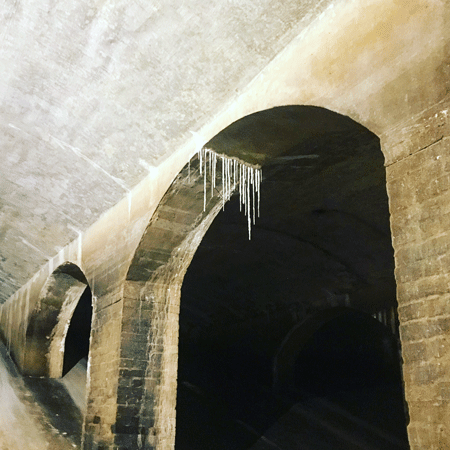
The Cisterns at Copenhagen is the most popular dripstone cave in Denmark. Water from the ground penetrated into the reservoir's ceiling for many years, forming dripstone, which makes the environment feel desolate.
The sound of the flame throwers came through the air, although you could see no flames but the “heat.” penetrated through your ears under such cold surroundings. It was so dark inside The Cisterns, so one must be careful with their steps. Mirrors were hanging in the air, reflecting everything behind you, and as if they were ahead of you, made you feel lost. The rotating mirrors were sneaky and hard to detect their existence. If you don't pay attention, you will be frightened by your own reflection in the mirror before you can laugh at it.
While it was a feast for the eyes, you could not relax your ears inside.
The Cisterns, too. Some singing bowls were placed inside The Cisterns. Whenever a visitor passes by them, it activates the sensory device to make the ball roll down and ring the singing bowls. This device cleverly utilized the echo effect inside the reservoir. When more people are moving around, the sound will be played from different corners of The Cisterns, creating a symphony that touches the capillary. Those who came to visit instantly became one of the creators. Everything created was random and could not be reproduced.
The real climax came after passing through a row of prison-like iron cages, you encounter the largest mirror of the exhibition... when you get closer, and even closer to it, fire sprays out from the flame thrower, the hot air hits the mirror surface, illuminating the entire space. Such contrast was strong and the moment was like experiencing a nightmare, perhaps a little too real.
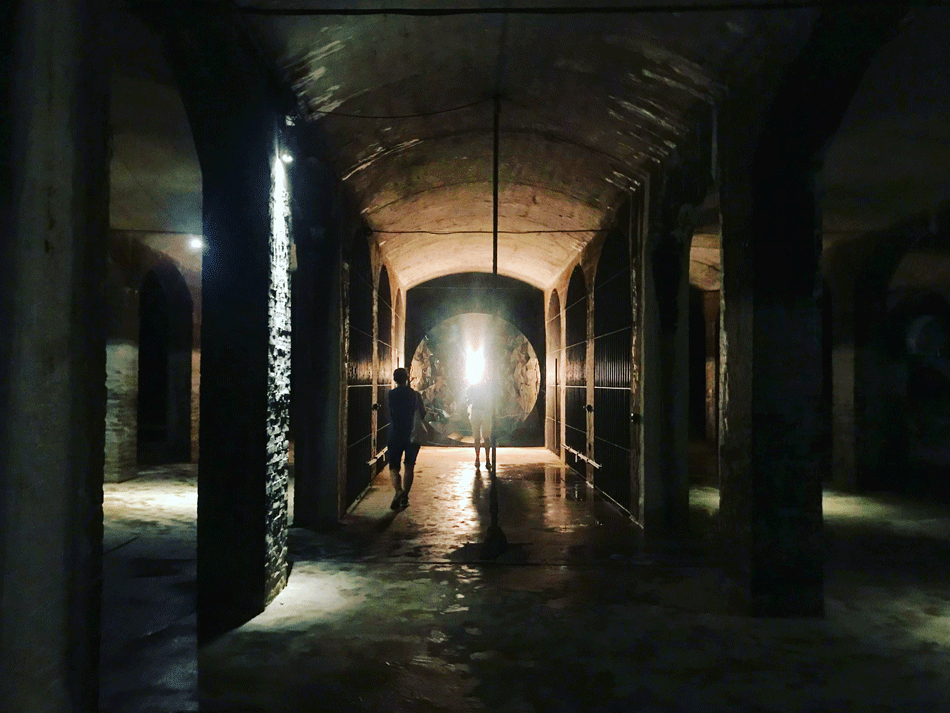
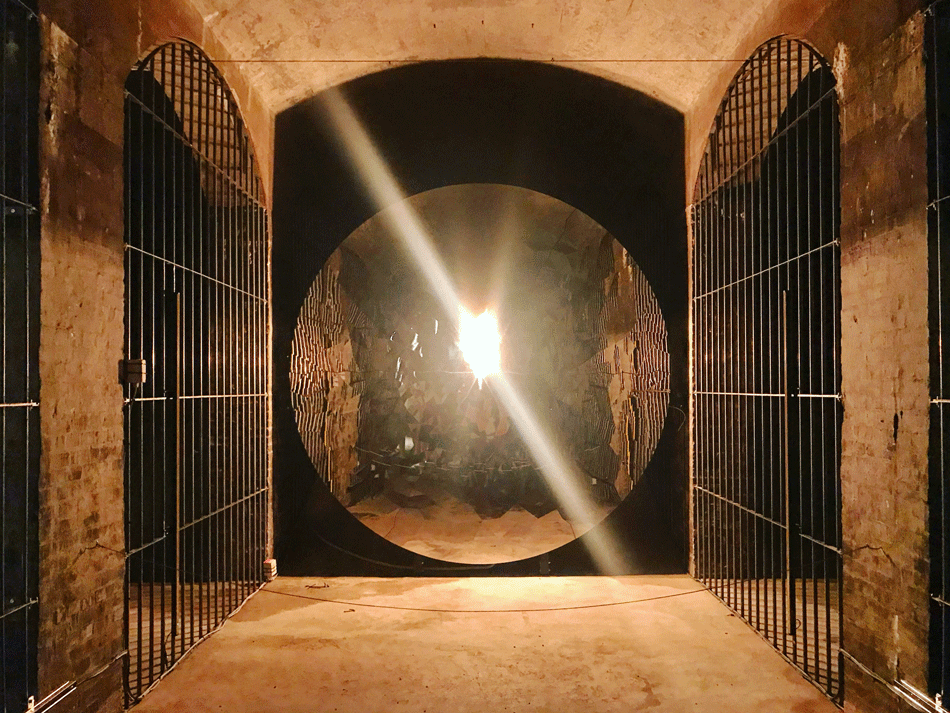
“IN IS THE ONLY WAY OUT” Exhibition,The Cisterns(2018)
All the mysterious arrangements at the exhibition were not meant to fright anybody out, but they contained some profound meaning: To cherish the warm heart after coming in from the cold; To know the darkness before appreciating the light.
Jeppe Hein hopes to remind people not to be afraid of the darkness, just embrace it and face it with honesty. IN IS THE ONLY WAY OUT, was the kind of exhibition which you need to experience it with a brave heart to find your way out.
The Cisterns has held dramas, concerts, video exhibitions, etc. and there will be more experimental events in the future. This year's special exhibition boldly restores the reservoir, inject clean water inside, alongside stationing a large-scale sphere art installation. Participants need to take a small boat to experience the exhibition in the dark, and of course, on the water!
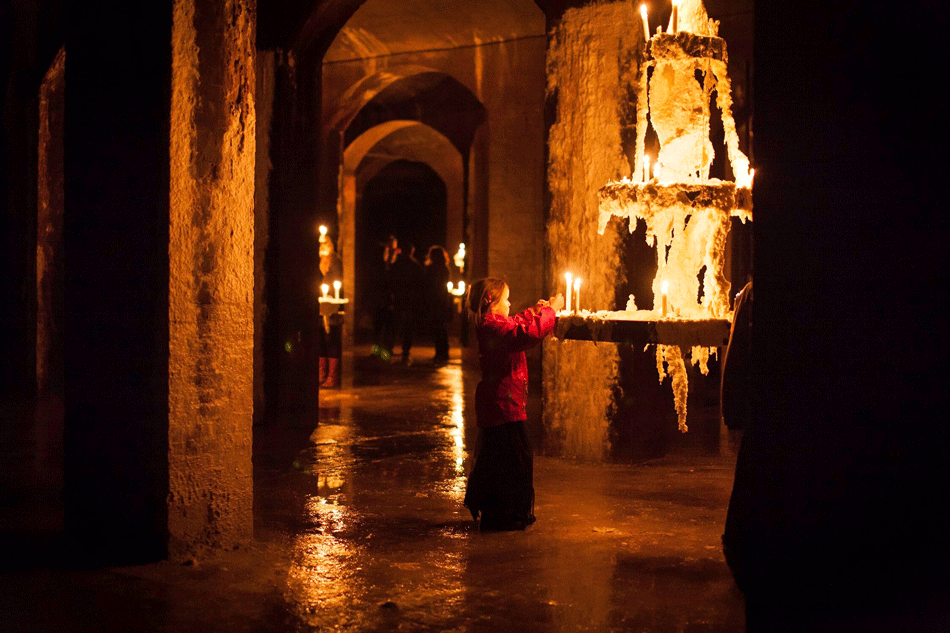
“Andante by Christian Lemmerz” Exhibition,The Cisterns(2014)
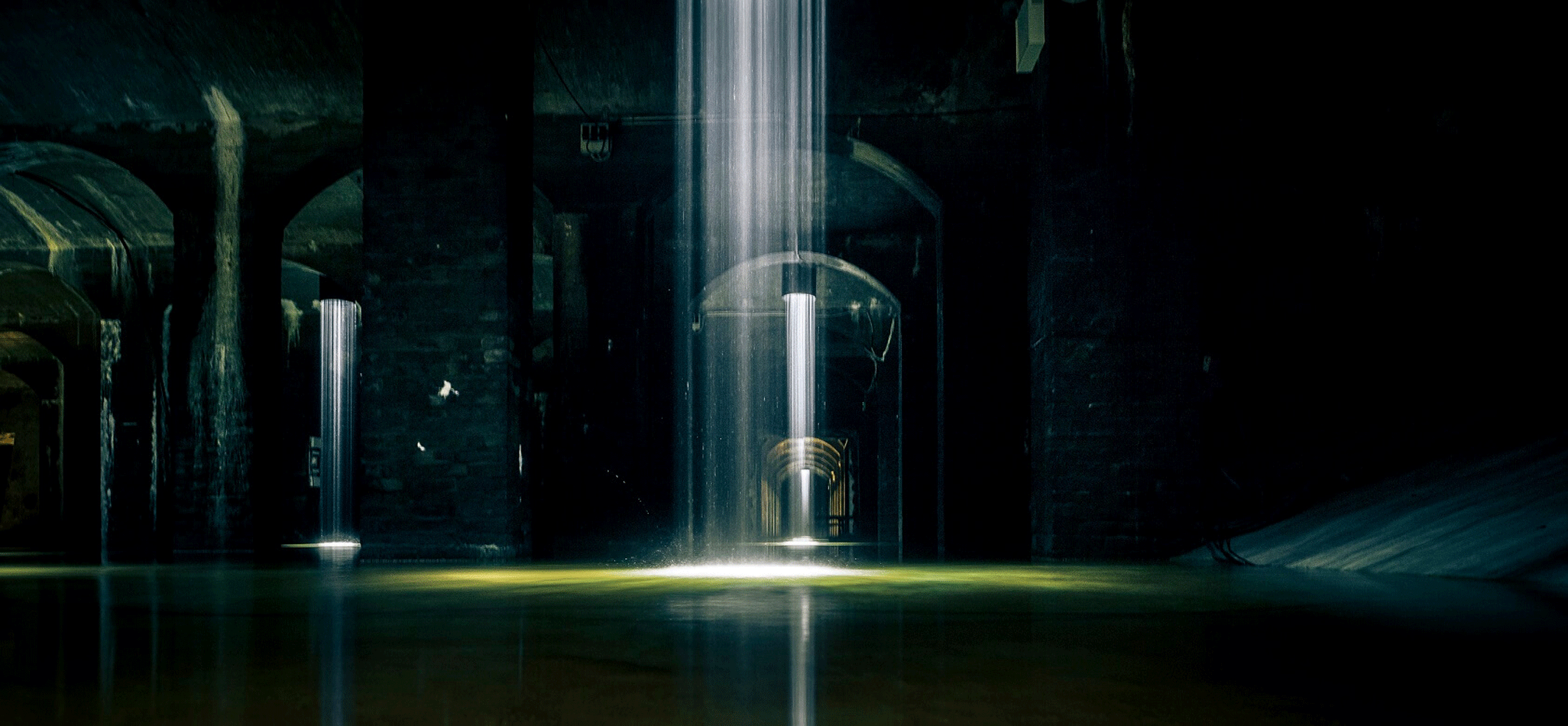

Light and darkness, ice and fire, dry and wet, ground and underground, good use and waste, are connected instantly with a reservoir.
“Event Horizon by Tomás Saraceno” Exhibition,The Cisterns(2021)

